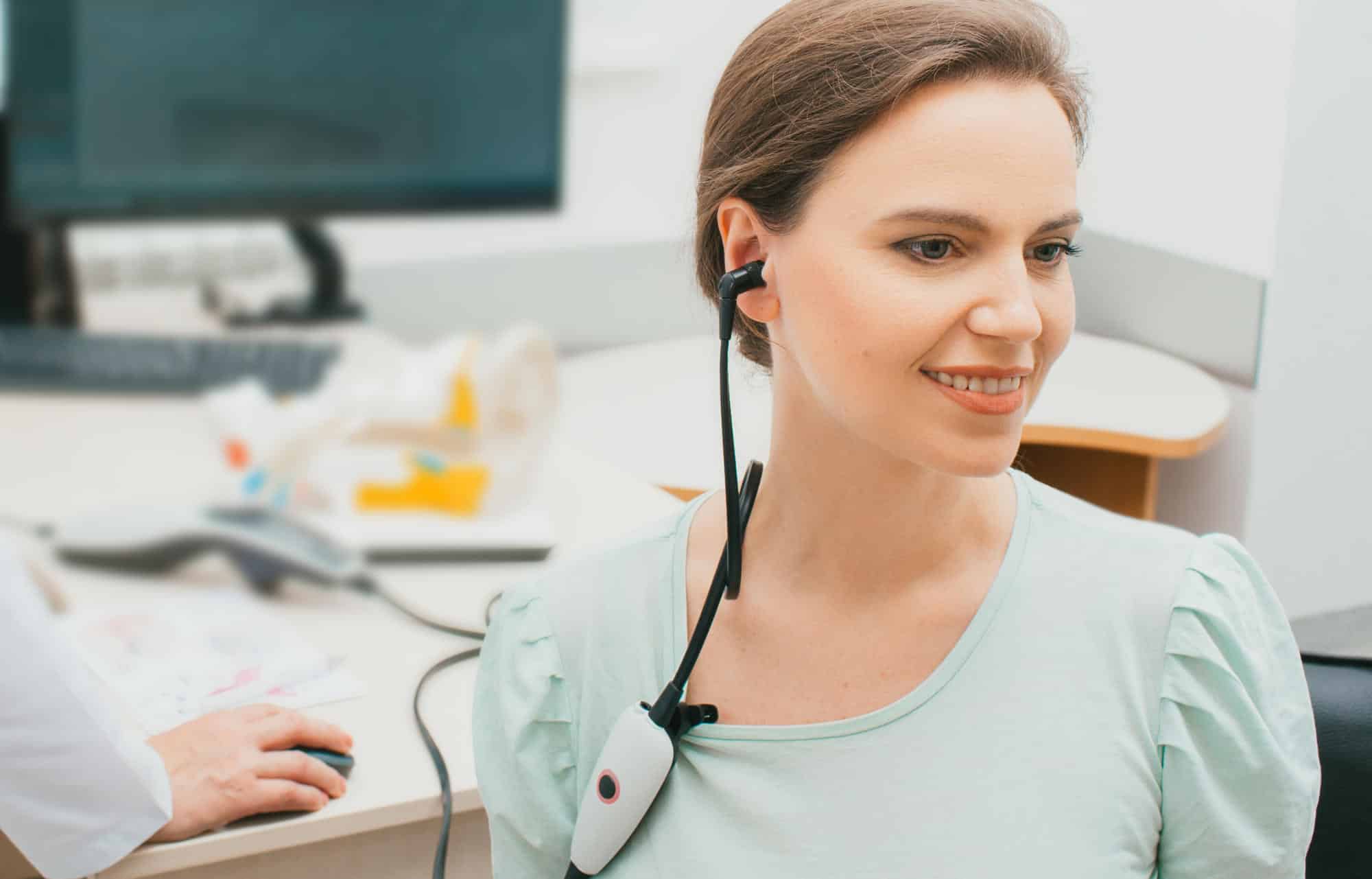
Key facts
- A hearing test can check what type of hearing loss you have and how severe it is.
- Hearing tests are performed by an audiologist. You can do an online hearing test if you’re not sure if you have hearing loss, but it’s less accurate.
- Most hearing tests check how loud a sound needs to be for you to be able to hear it. The results are recorded on an audiogram.
- There are different types of hearing tests which check how well sound travels in different parts of your ear.
- You can book a hearing test without a doctor’s referral. If you are eligible for the Australian Government Hearing Services Program your hearing test will be fully subsidised.

What does a hearing test check?
A hearing test checks how well you can hear different sounds. It is performed by an audiologist. They can tell from the results of the test what type of hearing loss you have and how severe it is.
Do I need a hearing test?
If you have hearing loss, or think your hearing may be damaged, a hearing test can check this.
It can be hard to tell if you have hearing loss because it often starts gradually. Some signs that you might have hearing loss include:
- turning the volume up high on the TV
- needing to ask people to repeat what they’ve said
- difficulty hearing someone speaking in a crowded place or if they’re not facing you
- difficulty hearing over background noise
- ringing in your ears
- not hearing the phone or doorbell ring
- avoiding certain situations because of problems with hearing
If you have a sudden loss of hearing, go to your local emergency department.
You might be concerned about your child’s hearing if:
- they’re slow to start speaking
- their speech is hard to understand
- they don’t react to loud noises
- they don’t understand what you say
- they ask you to repeat what you’ve said
- they’re struggling at school
If you’re not sure if you’re suffering from hearing loss, you can do an online test. Online tests are a guide only, so if you are not sure, see an audiologist or your doctor.
What types of hearing tests are there?
Adults and older children
Adults and older children usually have a test called pure tone audiometry. This tests how loud different sounds need to be for you to hear them. You will need to indicate when you hear a sound. The audiologist will make the sounds softer and softer and record the softest sound you can hear.
Pure tone audiometry measures your hearing in 2 ways:
- Air conduction — the sound is played through headphones into your ear, testing how well sound travels through your ear canal and middle ear.
- Bone conduction — a small vibrating device is put on the bone behind your ear. The test measures how well the device sends the sound directly through the bone to your inner ear.
The results of these tests are marked on a graph called an audiogram. Your audiologist will us the audiogram results to check if you have a hearing problem, what type of problem you have, and how severe it is.
A test called tympanometry may be done together with your hearing test. This checks the pressure in your middle ear and how your ear drum moves.
Babies and younger children
Babies and young children have different tests. Your child’s audiologist will choose from a range of tests, and pick those that are best for the age of your child.
There are 2 main types of tests: behavioural and objective.
Behavioural tests rely on your child doing something to show that they have heard a sound.
- Young babies might wake up or startle when the sound is played.
- Once your baby is about 6 months old, when the sound is played they can turn their head towards the loudspeaker. Each time they respond they will see something fun, such as a puppet.
- Once your child is about 3 years old, pure tone audiometry can be turned into a game. Each time they hear a sound they will need to perform an action with a toy.
Objective tests measure signals that show how well your child’s inner ear and hearing nerve work. They are done while your child is sleeping. Older babies may need a light anaesthetic so they stay still. Babies born in Australia have a screening test of this type when they are 1 to 3 days old, to test their hearing early.
Tympanometry can also check your child’s middle ear.


